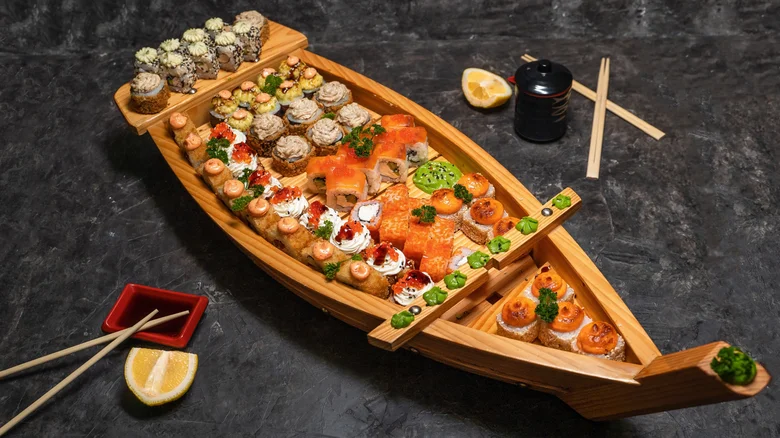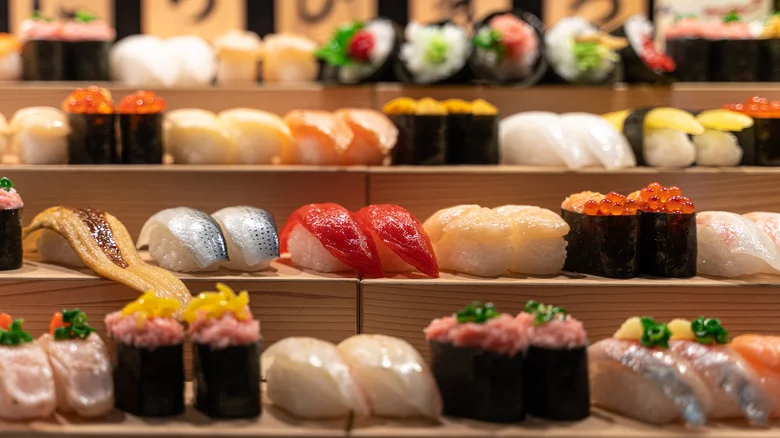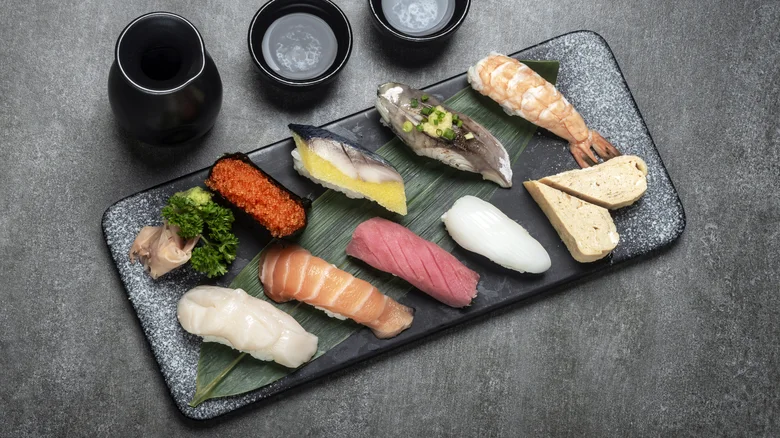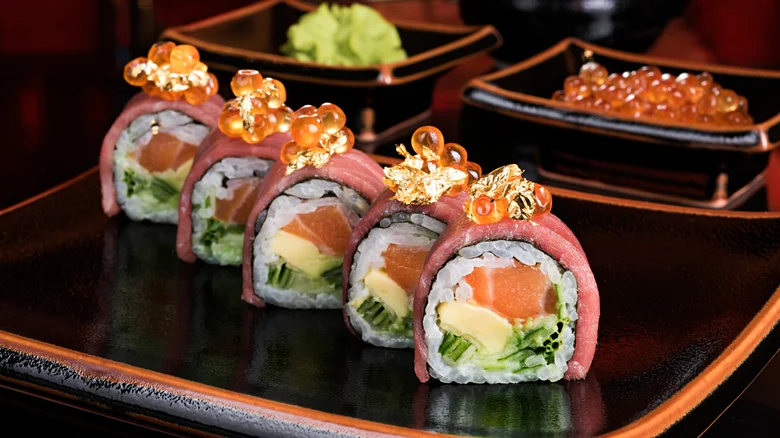Sushi can be an adventure for your taste buds—even if you don’t know exactly what you’re eating. But while diving into a plate of maki rolls or savoring a slice of toro is always enjoyable, there are a few unwritten rules that can enhance your experience—and a handful of missteps that can hold you back. Whether you’re a seasoned sushi lover or just beginning your journey into Japanese cuisine, brushing up on sushi etiquette and dining smarts is always a good idea.
To help guide your next visit, we spoke with four sushi pros: Chef Kenji Koyama of Kenbey Sushi in Los Angeles, Joel Hammond of Uchi West Hollywood, Nikki Zheng of Sushi Akira in NYC, and Brian Rosman, owner of PR agency Dog and a Duck. Here are 13 common mistakes they see—and how you can avoid making them.

1. Treating Sushi Like a Light Snack
If you find yourself saying “sushi never fills me up,” chances are you’re not ordering it right. Sushi is meant to be savored slowly and with variety. Brian Rosman recommends showing up hungry and ready to explore the menu. “We have a wide variety of fish and flavors—it’s a shame to miss out because you ate before coming.”
Even a few small dishes can add up to a satisfying meal. Try mixing and matching nigiri, sashimi, and maki rolls to discover new flavors and textures.
2. Ordering Too Much at Once
It’s tempting to go all in when you see the menu, but over-ordering is a common faux pas. Sushi isn’t a “one-and-done” type of meal—it’s often served in waves, so you can adjust as you go. “Start with a couple of rolls or a few pieces of nigiri,” says chef Nikki Zheng. “Two to three rolls or about eight to ten pieces of nigiri per person is usually a good place to start.”
And if you’re still hungry after your first round? Just order more. Chef Joel Hammond suggests pacing yourself and making sure you actually enjoy what you’re eating—no rush necessary.
3. Leaving Food on the Plate
While it’s not considered rude in the traditional Western sense, leaving uneaten sushi on your plate can be seen as wasteful in Japanese culture. “We encourage our guests to ask questions and be thoughtful about portioning,” says chef Zheng.
If your eyes were bigger than your stomach, be sure to pack up the leftovers. “Turn it into a nice bento box later,” suggests Hammond.

4. Avoiding Interaction With the Chef or Staff
One of the most rewarding parts of dining at a sushi restaurant—especially at the bar or during omakase—is getting to know the people behind the counter. Don’t shy away from conversation. Say hello, express your preferences, and be open to recommendations. “Let the chef know your dislikes ahead of time,” says Rosman, “and always say thank you at the end.”
Even a simple “arigatou gozaimasu” or a small bow goes a long way in showing appreciation for the craftsmanship.
5. Drowning Your Sushi in Soy Sauce
A common mistake? Dunking your sushi into soy sauce like it’s a sponge. Too much soy sauce can overwhelm the delicate flavor of the fish. For nigiri, dip the fish side—not the rice—lightly into the sauce to avoid overpowering or breaking apart your bite.
6. Mixing Wasabi Into Your Soy Sauce
While this might seem like second nature to some diners, sushi chefs often apply the right amount of wasabi directly between the fish and rice. Mixing it into your soy sauce can throw off the intended balance. Trust the chef’s preparation—or if you really want more heat, add it sparingly.
7. Using Chopsticks Incorrectly
You’re not expected to be a chopstick pro, but there are a few things to avoid—like rubbing them together (this can imply they’re cheap) or pointing them at others. If you’re struggling, don’t worry: it’s perfectly acceptable to eat sushi with your hands, especially nigiri.
8. Ignoring Seasonal Fish
Sushi isn’t just about tuna and salmon. Many restaurants offer seasonal fish that highlight freshness and variety. Ask your chef or server what’s special that day—you might discover a new favorite.
9. Ordering Rolls First at Omakase
If you’re at an omakase (chef’s choice) experience, hold off on ordering California rolls right away. Let the chef guide the journey—these meals are carefully curated to showcase texture, temperature, and flavor progression. Save the extras for later.

10. Drinking Too Much Too Early
A sake flight can absolutely enhance your sushi dinner—but moderation is key. Start slow, especially if you’re at a high-end omakase, where the chef wants you to be alert and engaged with each bite. It’s a meal, not a party.
11. Assuming All Sushi Tastes the Same
If you lump all sushi into one flavor category, you’re missing out. “There’s a nuance to every piece,” says Rosman. From buttery otoro to firm whitefish, each type of fish offers a different taste and texture. Savor the variety.
12. Treating It Like Fast Food
While sushi can be quick, it’s meant to be enjoyed with intention. Avoid rushing through your meal—give each bite the attention it deserves.
13. Skipping Dessert
Yes, sushi restaurants often serve dessert—and no, it’s not always mochi. From black sesame ice cream to yuzu tarts, many Japanese sweets are light, refreshing, and the perfect end to your meal. Don’t miss out.
Final Thought
Whether you’re sitting down for a casual sushi night or indulging in a full omakase experience, the key is to stay curious, be respectful, and enjoy the process. Sushi isn’t just food—it’s an art form, and every roll, slice, and dip tells a story. Respect the craft, eat with intention, and above all, come hungry.

